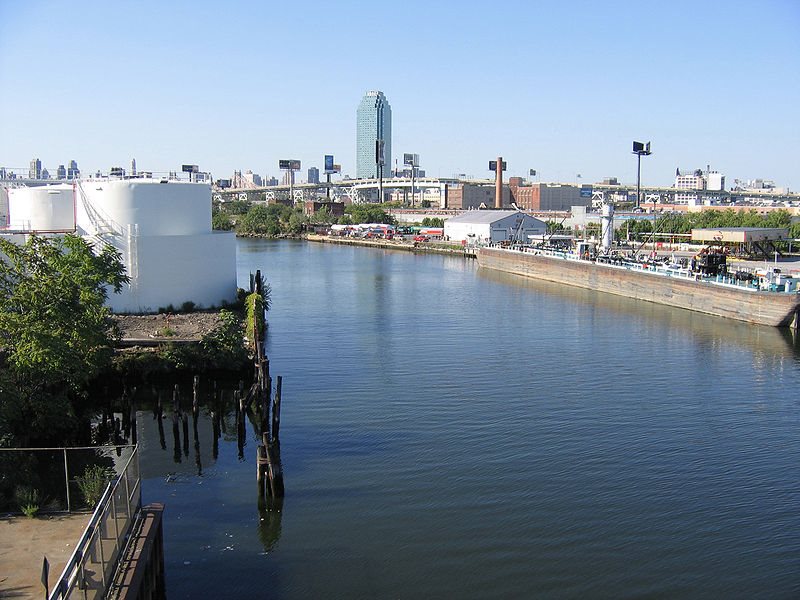Opportunity
Newtown Creek was once a brackish estuary of the Hudson River, flowing through wetlands and marshes. The Mispat people lived and grew corn at the head of the creek. In 1613-14, Dutch explorers surveyed the creek and acquired it from them.
The creek became the oldest continuously used industrial area in the country. The country’s first kerosene refinery was established there in 1854 and the first modern oil refinery in 1867. Sugar refineries, tanneries, canning plants, and copper wire factories followed. The creek was eventually enlarged and bulkheaded, and it became a major shipping hub.
With time, Newtown Creek was one of the most polluted industrial sites in America. Fifteen feet (4.6 meters) of polluted sludge covered the creek bed. In 2010 it was designated a Superfund site.
According to the Newtown Creek Alliance, which is dedicated to restoring the area, the creek has no natural flow because its freshwater sources have been covered over. “Flow exclusively consists of contaminated stormwater runoff, carrying trash from numerous bridges, unsewered and wholly paved streets and industrial sites, waste transfer stations, and combined sewer overflows (CSOs) from the city’s sewer system.”
To help reduce the last of these impacts and address the provisions of the Clean Water Act, the New York City Department of Environmental Protection began developing its Combined Sewer Overflow Long Term Control Plans. In response to an Amended Consent Order signed with the New York State Department of Conservation, the NYCDEP plans to use green infrastructure to help improve water quality standards in the city’s waterways.
Solution
The NYCDEP’s green infrastructure project called for creating right-of-way bioswales in the Newtown Creek CSO tributary area, a total of about 2,000 acres in Brooklyn.
Bioswales capture rainwater runoff that would otherwise enter combined sewers, allowing it to infiltrate the soil and be absorbed by vegetation. Impervious surfaces are replaced with permeable substrate, organic topsoil, and vegetation.
In 2013, Mott MacDonald was retained as prime consultant for the project, with responsibility for the following:
- Analysis of tributary drainage (approximately 525 acres or 212 hectares)
- Site selections
- Geotechnical investigation, including hiring and supervising drillers
- Topographic surveys
- Design of over 550 right-of-way bioswales
- Bidding assistance
The project required working in a densely developed urban community with a mix of residential and commercial areas. Coordination with multiple city agencies and concurrent design contracts was required. An aggressive schedule required the design to be completed in less than a year.
Outcome
Thanks to the efforts of various stakeholders, the Newtown Creek Alliance says that life is returning to the creek. “You can find blue crabs at the mouth, fish swim in its waters, and waterfowl are prevalent. Wetland plants are taking over the abandoned bulkheads and sediment piles.”
The green infrastructure project will do its part in helping Newtown Creek recover. By reducing the number and quantity of CSOs, it will improve water quality in the creek. The planting of trees and other vegetation will improve air quality and make the area more attractive.
The project is also expected to mitigate the city’s “gray” infrastructure needs, thus reducing capital costs.



